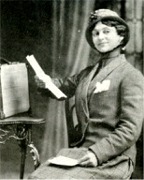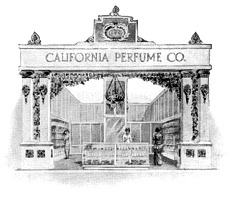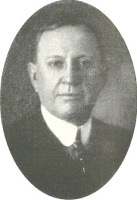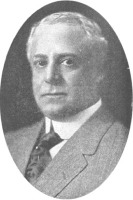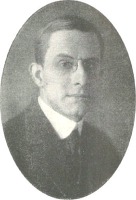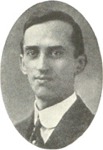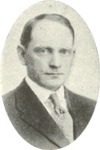The Story of Perfumery and the C P C
The Story of Perfumery and the C P C
by William Scheele
The Story of Perfumery
a Little Treatise of Fundamental Floral Fact
|
|
The word perfume is from the Latin: per-through; and fumare, to smoke. Hence, a substance that affects agreeably the organs of smell, by giving forth a smoke or vapor generally invisible.
Early Use and History
The first perfumes were in the form of incense and formed a part of religious worship. This incense or perfume was used to eliminate the odor of burning flesh arising from the sacrifices to the gods. Perfume flasks excavated in Babylon and Nineveh indicate that perfumes were well known at that time.
Perfumes have always played an important part in the history of civilization. Women have charmed and ruled mighty men of old, thereby shaping the destinies of kingdoms; and their use of exquisite perfumes and toilet accessories has always been an important aid in weaving the magic spell of love and enchantment.
The most ancient perfumes are the various fragrant gum-resins which exude naturally from some trees to increase the production of which, the plants are often purposely wounded. The most important of these are benzoin, olibanum and camphor. Millions of pounds of these are imported annually from tropical Eastern lands.
Maceration Process
One of the oldest methods of extracting the odor from the crude materials is maceration in oil. In some parts of Southern France this method is still followed. The flower blossoms are stirred in hot grease and when the grease has absorbed all the odor, it is strained off. More flowers are put into it and the operation is repeated until the grease has absorbed all the odor it will hold. This perfume grease is called pomade.
About Distillation
The Egyptians are said to have discovered the principle of distillation. They noticed that the steam from a boiling caldron had the odor of its contents and by crude means proceeded to separate the volatile oils. As soon as the Greeks and Romans learned the use of the still they began distilling large quantities of oil from the perfume bearing plants of Greece and Italy. Oil of Neroli (or Neroly) is a distillation of orange blossoms, and is said to have been named after Emperor Nero.
What is Distilled
Oils are distilled from woods, such as cedar, rosewood and sandalwood; from the bark of cassia and cinnamon; from the seeds of caraway and nutmeg; from the rind of fruits such as lemon and orange; from the leaves of such plants as patchouli, geranium, sage, mint and thyme; from roses, violets, and hundreds of other odoriferous flowers and plants. Distillation of practically all the odoriferous plants is carried on as near as possible to the place of collection, frequently in portable stills. The oil of the flower must be seized and put into airtight containers as soon as possible after gathering.
The Old Way
The old name for these oils was Quintessence; they aye now termed Essential Oils. Sometimes they are called Ottos, from the Turkish word Attar, such as the well-known Otto or Attar of Roses. The old and crude process, and one which is still practiced in certain districts, is very simple. The fragrant part of the plant is put into the still, covered with water, and heated by direct fire underneath. The ottos rise with the steam, are condensed in the pipe and remain floating on the water, from which they are easily separated.
Quantities Obtained
The production of oils differs greatly: 100 lbs. of orange, lemon or bergamot fruit peel yield about 10 ounces of fragrant oil: 100 lbs. of cedar wood give about 15 ounces of oil of cedar: 100 lbs. of nutmeg yield about 60 ounces of oil of nutmeg: 100 lbs. of geranium yield about 2 ounces of oil. As a rule, however, the average is less than 5 per cent., and in many cases only the merest traces of essential oil are obtained.
|
|
It requires from 3,500 to 4,200 pounds of rose flowers, according to season, to obtain one pound of pure rose oil by steam distillation.
The Modern Way
In modern distillation, steam is passed into the still at various degrees of pressure and at different temperatures, according to the degree of fineness of the material. The speed of its flow and other points are gauged by the apparatus used and according to the substance being distilled. With the increase of the use of perfumery, there has been a constant development of machinery which will extract every atom of perfume; for the old and crude methods of steam distillation never obtained all the perfume constituents present in the plant.
Expressed Oils
There is a class of essential oils called "Expressed Oils." These oils are obtained by squeezing and manipulating the rind of the fruits. By this method the finest oils of lemon, orange and bergamot are obtained. With the cheap labor of Sicily, where these oils are made in large quantity, it is possible to do this work entirely by hand. It is slow and tedious, but thus far it has proven most satisfactory.
The peel, as stated, is squeezed and manipulated, crushing the oil cells; the oil is absorbed by a sponge from which it is then pressed out, and filtered for market. Machines have been tried, but none have been found commercially satisfactory except to a limited extent for the bergamot, which is more regular in shape. These are called citrous oils.
Concretes
A very efficient modern process is the manufacture of "Concretes." By this means the perfume from such flowers as the rose and the orange blossom is extracted. Petroleum ether is forced through the flowers which are packed in large copper containers. The containers are hermetically sealed, the petroleum ether is introduced by means of force pumps, the amount depending upon the strength of the flowers. The perfumed liquid is drawn off and distilled in a vacuum, and in this way practically the entire odor of the flower is obtained in concentrated form.
Enfleurage
Now let me explain the most interesting process of all, the "Enfleurage" method, by which most of the flower pomades are obtained. This mode of extracting the odors from flowers has been in practice for two centuries in the Valley of the Var, in Southern France. The odors of flowers do not, as a general rule, exist in them as in a gland, but are developed as an exhalation. While the flower breathes, it yields fragrance; kill the flower and the fragrance ceases. If a living flower be placed near to grease, animal fat, butter or oil, these bodies absorb the odor given off by the blossom and in a comparatively short time (about 24 hours) the grease has become fragrant.
I believe I can best describe this process by quoting a letter I received from our Vice-President and Treasurer last summer.
|
|
"Luzern, Switzerland. "A fifteen-hour railroad journey from Paris found us in Southern France and at Cannes on the Mediterranean Sea. As our train laboured up steep inclines and around sharp curves, we were watching the strange and fantastic formation of the land, and the deep indigo blue sea. "Thirteen miles from Cannes by rail, but only half that distance as the crow flies, is Grasse, 1070 ft. above sea level, on the side of a verdant mountain and sheltered by the Maritime Alps, whose distant peaks we saw covered with snow. The valley from Cannes to Grasse is very fertile and grows the flowers mostly used in the manufacture of perfumes.
"As we motored toward Grasse we passed field after field of Jasmine in blossom, but not quite ready to harvest. A few weeks ago the Roses were gathered, when tons and tons were brought to the laboratories to have their sweet perfume removed and preserved, so that the dwellers in less favored parts of the world might enjoy the delicate odor they possessed. To give an idea of the number of flowers picked each year in this valley, I find a carefully prepared statement gives it as 10,000,000,000. "The flower harvest lasts nearly the entire year — beginning in February with the Violets, continuing during March and April with the Hyacinth and Jonquille. May and June are the months for Roses and Orange Flowers and during this harvest, work commences at dawn and continues until midnight. The Mignonette and Carnation harvest takes place in July, and beginning August the large crop of Jasmine is gathered and this usually takes several months; last is the Cassia which continues until December. "For preservation of the Jasmine, Jonquille and Tuberose flowers, the chemist prepares his grease made from beef and pork, which is carefully spread on both sides of glass frames about two feet square; then the flowers are strewn on the grease and the frames packed in high racks; after twenty-four hours the flowers are picked off, the grease turned over with a wide knife and more flowers put on; this process is continued for about twenty days until the grease is thoroughly impregnated with the odor of the flower. The product is now known as pomade. "The handling of the other flowers is quite different. For them large copper vats are used and the same quality of grease, but heated; while hot, flowers are put in; then more hot grease and more flowers until the vat is full. This is allowed to stand for twenty-four hours, when the grease is reheated and more flowers used, this practice being continued for nearly three weeks, when the vats are emptied into linen bags and the bags submitted to hydraulic pressure. The grease, now thoroughly saturated with the odor of the flowers, is forced out of the bag and only the pulp, now barren of fragrance, remains in the bag — this finished product is also called pomade and it must be kept in a cool place. We went down in several specially made cellars where we found many tons stored, all white as cream, and as the lids were removed the room was instantly filled with a delightful fragrance. "It is these pomades which we import direct from Grasse for the making of our perfumes, and thus we have the true flower base which makes our floral odors so true to natural flowers and so lasting. "I must not forget to mention the abundance of olive trees, and that the olives grown in this valley are recognized as the finest for olive oil. The olives are very small and allowed to thoroughly ripen, being just the reverse of our table olives, which are large and preserved when green. The cheaper grade of olive oil is made from large olives, grown in Spain and Italy, and is liable to have a woody taste and will not keep as well as the genuine French oil. "We shall long remember Southern France with its blue sky and gentle winds, its very hospitable citizens and the abundance of good feeling one meets on the street and in the laboratory. We turned our eyes away from this delightful place with regret, but with the hope of returning soon and continuing just where we left off. "Cordially yours, "ALEXANDER D. HENDERSON." |
From Flower Field to Factory
In the foregoing pages you have a brief sketch of how the raw material is gathered and treated. These ingredients are shipped direct to our laboratory, situated in the picturesque Ramapo Valley among the mountains of Rockland County, New York. It is there that the materials are skillfully compounded so that the product is as perfect as human ingenuity and the most modern machinery can make it.
Washing the Pomade
The pomades are put into large washers, which somewhat resemble huge ice cream freezers. In these washers, the grease is mixed with the highest proof cologne spirits obtainable. As the name indicates, the perfume is washed out of the pomade in these washers. The cologne spirits now hold the true odor of the flowers that were originally put into the grease. Some of the spirits are slightly tinted green or amber after being impregnated with the odoriferous substance they have extracted from the flowers.
(Right here it is pertinent to add that the C P C perfumes and toilet waters are not artificially colored. The only coloring is that given to them by the natural floral oils.)
Fixing the Odor
The perfume in this form would not last. The odor would be given off too fast. It must be fixed. For this purpose certain fixatives are used. These fixatives permit the perfume to be given off in small quantities at a time, thereby duplicating the conditions as they exist in nature. For this purpose such materials as civet, musk, ambergris, some resins, and numerous other oils and synthetics are used.
About Musk
One of these fixatives, musk, is perhaps one of the oldest perfume materials in existence and consists of the dried secretion of the preputial follicles of the male musk deer. Within a comparatively short time this animal may become extinct as it has been hunted so hard that now it is only found in the Himalaya Mountains at elevations of 8,000 to 12,000 feet. Occasionally they wander into lower altitudes, but the musk secreted by them is not as good. Every musk pod sold means that a deer has been killed. The musk pods are purchased by native dealers, carried by caravans to the seashore and marketed from Chinese seaports. The genuine article is commercially known as Tonquin Musk and valued at $20.00 to $25.00 per ounce. It is becoming scarcer and higher priced each year (for reasons above stated). There are artificial substitutes but they are very inferior, as the chemical substances to which musk owes its odor have never been definitely identified.
About Civet
Civet is the secretion of the civet cat of Abyssinia, where the cat is kept for the purpose of producing a regular supply. It is a substance similar to musk. This is found in a large double Civet pouch situated between the anus and the sexual organs in both male and female. This secretion is removed from the bag about twice a week by means of a small spatula. It is obtained most abundantly from the male, a dram being a large quantity to obtain at a time.
About Ambergris
Ambergris is a fatty substance of an ash gray color found in lumps of half an ounce to I 00 lbs., floating on the sea or cast upon the seashore in different parts of the world. It is also taken by whale fishers from the spermaceti whale. Much ambergris is obtained from the coast of the Bahama Islands. It is also brought from different parts of the West Indies and the coasts of Africa and Brazil.
The Supply is very irregular and uncertain. Its chemical substance is known and consequently there are many synthetic substitutes.
Other Fixatives
There are many other fixatives both natural and artificial, a composition of which would take too long to describe in a short treatise like this. The foregoing, however, describes the three principal natural fixatives, and give the reader an idea of this feature of perfume manufacture.
Perfume Bases
The washing from the flower pomades, the concretes, the oils and distillates constitute the base of all good floral odors. They represent the background for the perfumer. Upon this base the perfume is built. To make the finished product true to flower, and an odor that will possess reasonable lasting qualities requires the services of an artist, one who knows the absolute value of every ingredient, so they will be compounded in correct proportions; for too much or too little of certain materials would completely spoil an otherwise perfect product.
Our Equipment
The California Perfume Company not only purchases the very finest of raw materials direct from that part of the world where the best is produced, but is also equipped at the laboratory at Suffern, New York, with the most modern machinery, and has the benefit of the services of that international perfume artist. The purchaser of any perfume or toilet requisite bearing the C P C label can, therefore, always be assured of obtaining the very finest product manufactured today.
I hope the reader has found the foregoing of interest. It does not contain all the information about perfumery, for that would fill Vol.s, but I believe enough has been printed to enlighten him or her somewhat upon a subject about which the public generally has not been informed.
Years of patient experimenting, investigation, and research work have made the perfume industry the great factor it is in commerce today. It has attained unparalleled achievements in the past, and undoubtedly will continue onward, upward, and forward in the centuries to come.
The Story of the C P C
A Brief Sketch of the Upbuilding of a Great
Business
The C P C story — that is, the story of the California Perfume Company — dates back to 1886 when the business was started by our President, Mr. David H. McConnell, in a little office about 20 x 25 feet in size, at 126 Chambers Street, New York City. The business grew rapidly and soon two entire floors or lofts were occupied in the same building.
|
|
Continued Growth
Ten years later, Mr. Alexander D. Henderson, our Vice-President and Treasurer, joined the company and helped to shape its policies and assist in its growth. In 1897, the services of the writer were engaged and subsequently he became Secretary and General Sales Manager. The company at that time (1897) occupied four entire floors for offices and shipping rooms, and the laboratory was built at Suffern, New York.
Office Expansion
In 1909, the New York offices were moved to our present commodious quarters at 29-31 Park Place, corner of Church Street, one block from the New York General Post Office and the City Hall, in the heart of the great downtown commercial and financial district of Manhattan Island.
The territory east of the Mississippi River handled from the New York office is subdivided into three parts:
Eastern Division, Edward l. Helmig, Manager, comprising New York, New Jersey, and the New England States.
Central States or Western Division, Alonzo E. Williams, Manager, consists of Ohio, Indiana, Illinois, Michigan, and Wisconsin.
Southern Division, P. Henry Brockmann, Manager, contains the twelve southern states east of the Mississippi.
|
|
|
|
|
Branch Offices
The rapid growth of the C P C business has also necessitated the establishment of branch offices and warehouses. In 1895, the Luzerne Branch was opened, with J. D. Tiffany in charge; 1898 saw the opening of the San Francisco office, George J. McConnell, Manager, Gustavus J. Gardner now in charge of the Sales Division. This Branch was completely destroyed by the great earthquake and fire in 1906, but was immediately reestablished. In 1903, Kansas City Branch was begun, P. J. Morgan now managing. With our growing Canadian trade, the necessity of a branch across the border was apparent, and in February, 1914, the Montreal office started doing business, Charles C. Stewart, Manager.
|
|
|
|
|
The C P C Idea
This phenomenal growth may all be attributed to the original C P C Idea which is the manufacturing of a complete line of perfumes and toilet articles, as well as household necessities and specialties, each the best possible article of its kind, to be sold DIRECT TO THE USER, instead of via wholesalers and jobbers.
Our Sales Organization
This plan of selling is the same today as thirty years ago, except that from a small beginning the Company has built up an organization of over 20,000 Representatives, constituting the largest and most efficient selling organization of its kind in the world, and covering practically every city and town in the United States and Canada.
Travelers
A large force of General Agents is required to fill in all open territory. They are constantly traveling from town to town appointing and instructing reputable men and women as our local Sales Managers. A more capable body of men and women cannot be found anywhere.
State Division Managers
The business of each state or province is also supervised by a State Division Manager, who is an expert sales engineer and correspondent, looking after the business of each Representative in such state with conscientious care. These State Managers give each worker every possible encouragement and help, which has been a big factor in the development of the C P C institution.
Easy and Safe
In this way the C P C Idea brings direct to the door of practically every home in America a complete assortment of the finest perfumes, toilet articles and home necessities. The C P C way is consequently not only the easiest and safest way to purchase toilet articles, but it is also the most economical way, because, by selling direct to the user, all middlemen's profits are eliminated, our customers getting the benefit of this enormous saving in an infinitely superior quality not otherwise possible at the price.
Orders Called For and Delivered
Representatives call at regular intervals at all homes in their respective territories for orders, which are later delivered by them, and no one takes any risk whatsoever in dealing with our authorized Representatives. Where we have no Local Representative, ANY ARTICLE MANUFACTURED BY US WILL BE SENT DIRECT, UPON RECEIPT OF REMITTANCE, ALL DELIVERY CHARGES PREPAID.
Applications Invited
In any town where we have no Local Representative we also invite applications from any responsible person who would like to act for us in this capacity. To such persons we can offer an immediate permanent, profitable and dignified position, which will produce a steady income, limited only by the applicant's ambition and ability.
Pictures and Excerpt above from The Story of Perfumery and the C P C by William Scheele, 1916

